What does good mentorship look like?

The Heidelberg Laureate Forum is about a lot of things. Tackling big problems in computer science. Celebrating mathematical inquiry and exploration. Consuming cubic meters’ worth of pastries and spätzle.
But, perhaps above all else, the HLF is about mentoring.
You take 200 young researchers (students and postdocs) from across the world; you kidnap 25 honored laureates in mathematics and computer science; and then you throw them together. What is mentorship, if not the fluid mechanics of wisdom and enthusiasm flowing between the generations? Curious how the young researchers saw the mentor/student dynamic, I asked them to answer, in a one-page cartoon, a simple question: What does good mentorship look like?
Becca Taft, who just finished her PhD at MIT, impressed me immediately with her choice of axes: “time” and “hand-holding.” That’s the dance of the doctorate, in a nutshell: the move from dependence to independence.
“What if the value goes below the axis?” someone asks. “What’s negative hand-holding?”
“Maybe it’s when you now get to advise your mentor,” someone else suggests, which is a much nicer interpretation than the alternative: a mentor-turned-adversary who trips you in the hallway, inserts typos into your publications, and applies for the same jobs you’re going for.
Do Duc Tai, a PhD student in Singapore (by way of Vietnam), draws a serene, elemental image of two figures who look kind of like they’re doing splits:
“Why the sun-showers?” I ask.
“Your advisor makes you feel good, whether you’re doing well or not,” he explains. “Rain or shine.”
Chun Wang Nicholas Ng, a postdoc in London, puts on what I consider an artistic tour de force, laying out the contrast between a helpful adviser who walks by your side, and a tyrannical one who looms above:
Matthew Tam, a postdoc in Germany (by way of Australia), gives us a spiky-haired adviser with a magnificent, blanket-sized tie. We watch as an idea moves from adviser to pupil. It’s mentoring via acts of inception.
Leilani Battle, a postdoc in Seattle, ponders deeply before drawing her pie chart. Then she explains why choosing a pie chart betrays everything she knows about data visualization, her specialty. But I dig it.
“Two wedges for writers, and two wedges for groups of scientists,” I say. “And then… Yoda?”
“I’d already colored it green,” Leilani explains. “Also, Yoda is the best.” Can’t argue there.
Finally, Katya Alejandra Alvarez Molina, a PhD student in Germany (by way of Mexico), offers a haunting-yet-inspiring canvas of the tortured PhD student, caught between the angel of encouragement and the devil of despair.
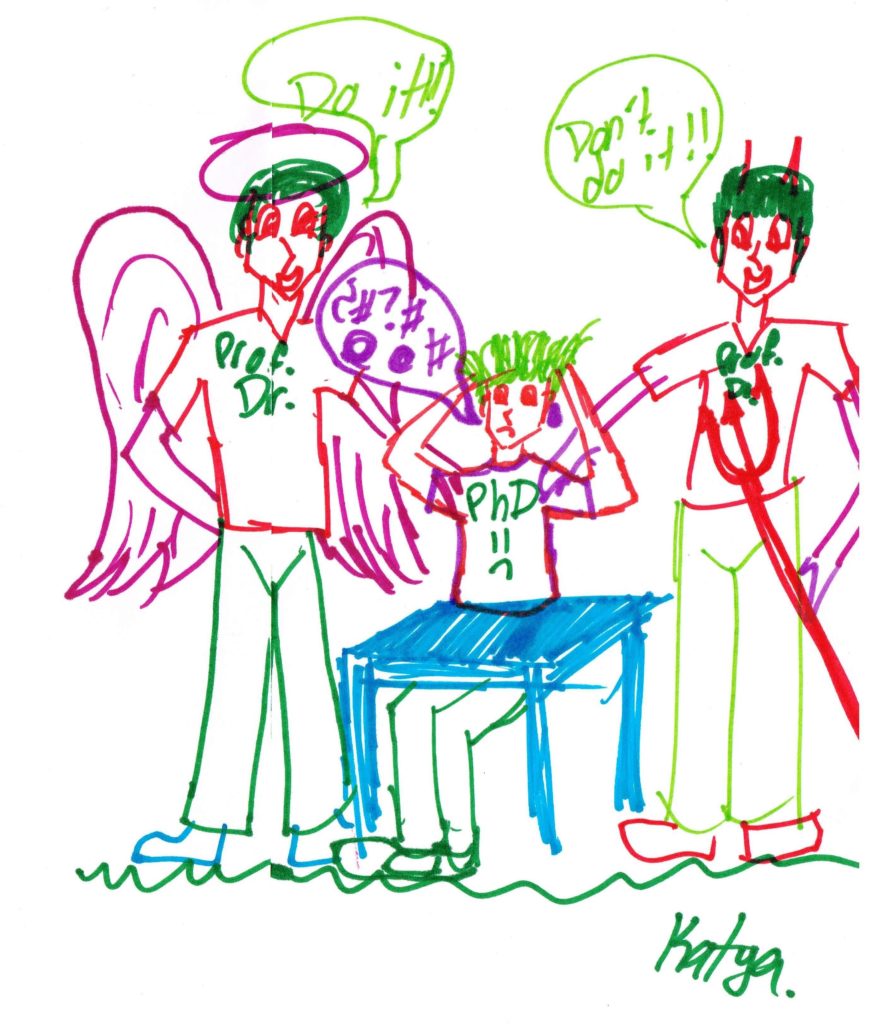 Will the young scholar take action, or suffer paralysis? Do great things, or hang back and envy them? Here, mentoring is a fight for the soul of the young researcher – and it helps to have a great adviser in your corner (or on your shoulder, as the case may be).
Will the young scholar take action, or suffer paralysis? Do great things, or hang back and envy them? Here, mentoring is a fight for the soul of the young researcher – and it helps to have a great adviser in your corner (or on your shoulder, as the case may be).


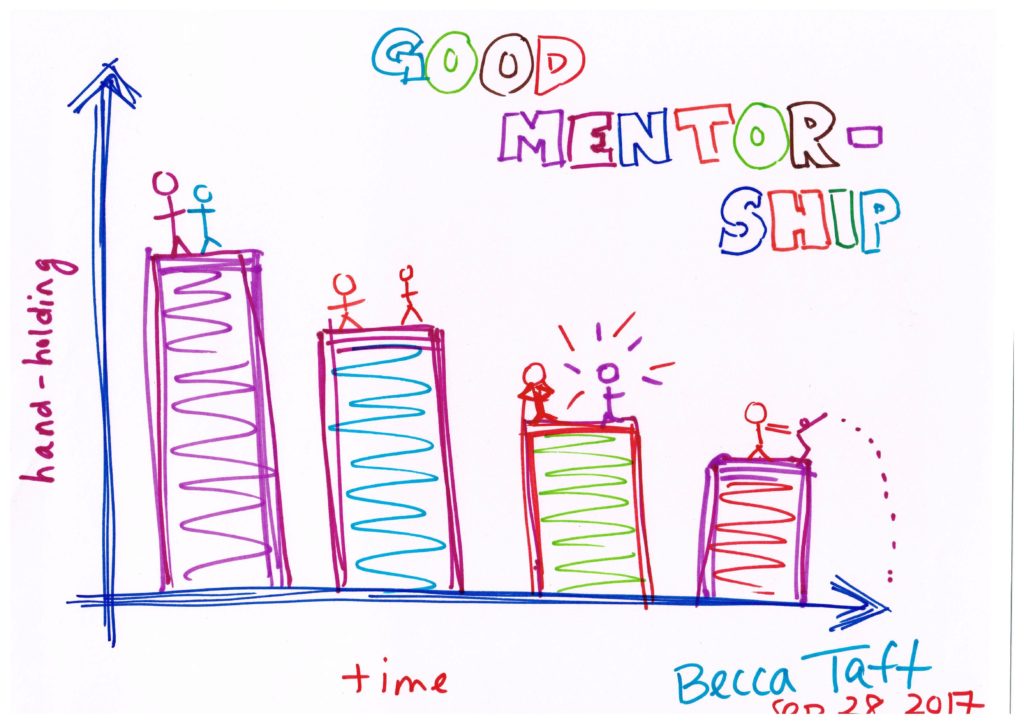
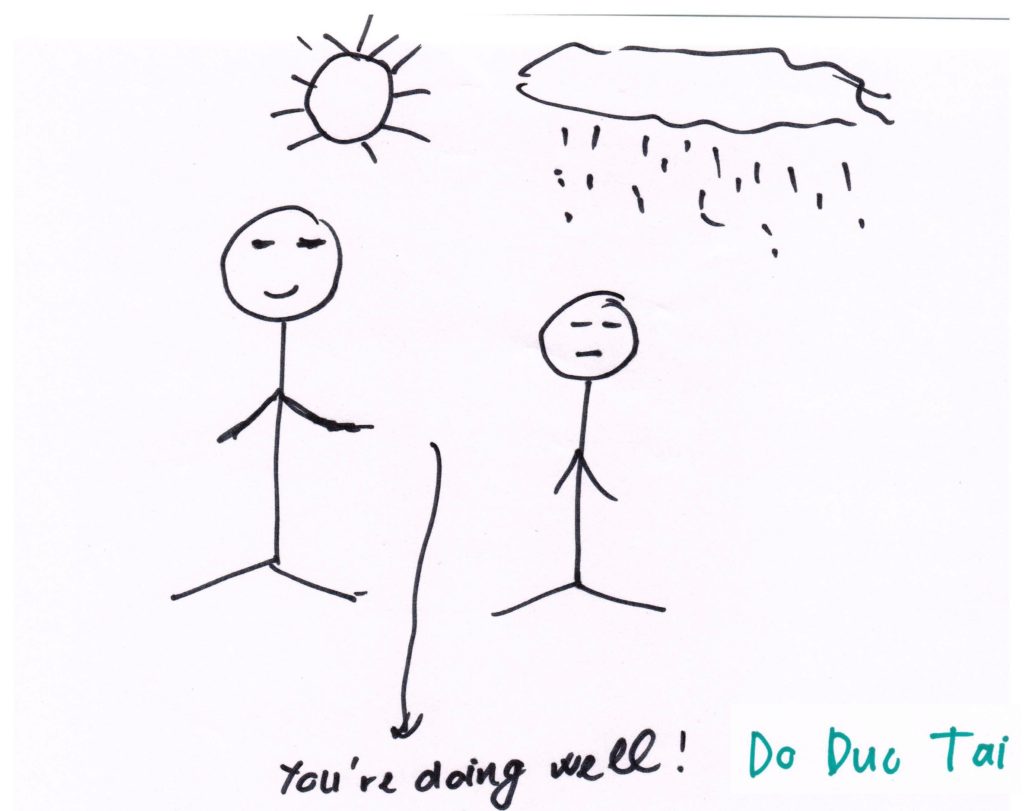
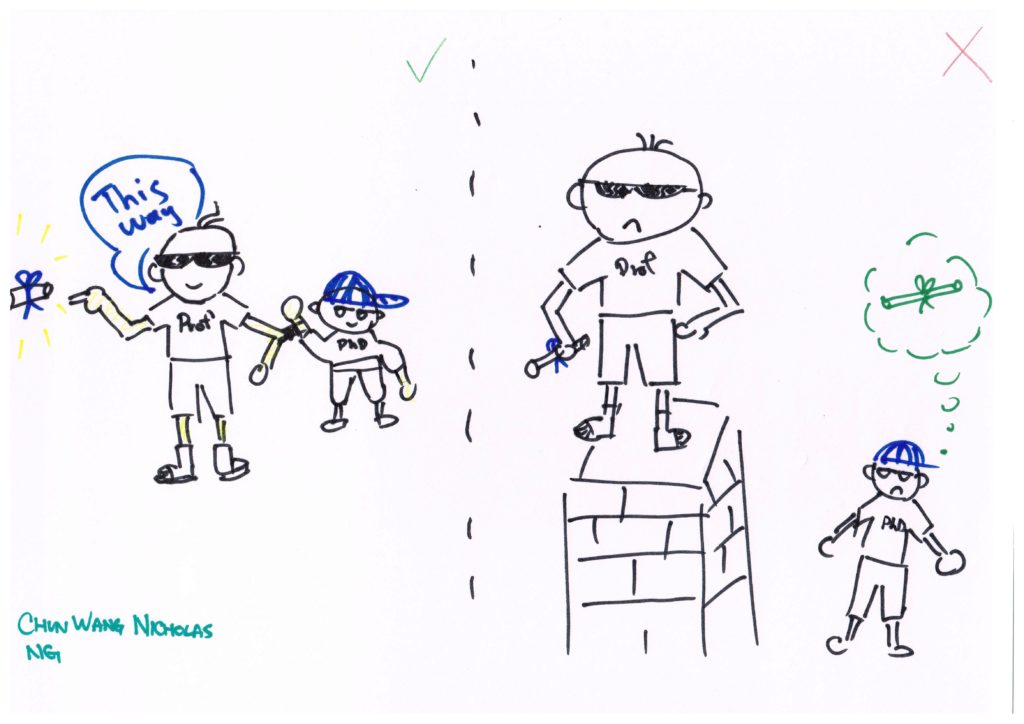
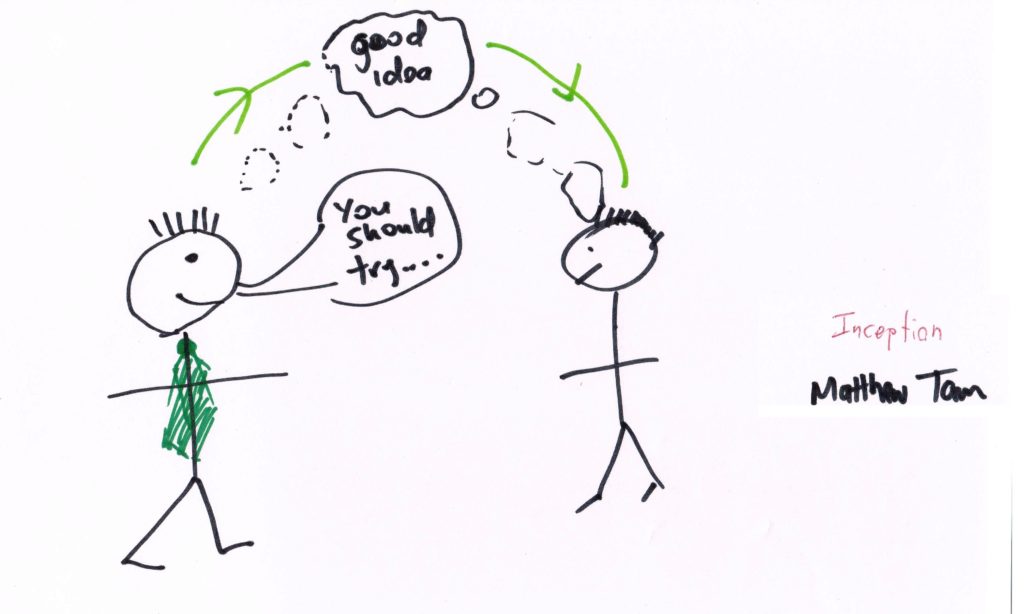
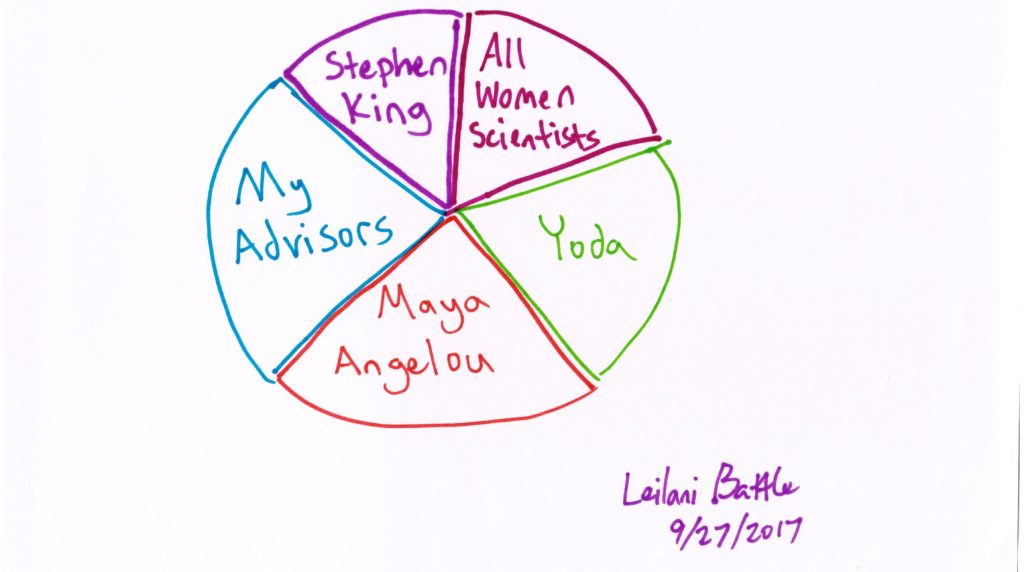
This is a very informative article. When students are studying in the colleges and universities so their have no basic skills who should have to every student. Well, this article is very helpful for every student and I hope they must get the important points in this post. Thanks for sharing the nice information. By the way, mostly student is not good in the writing when they teachers give the assignments tasks so they face a lot of problems during the writing so they can take help with top essay writing service because they help to students on their writing projects and also provide the best academic assistance.